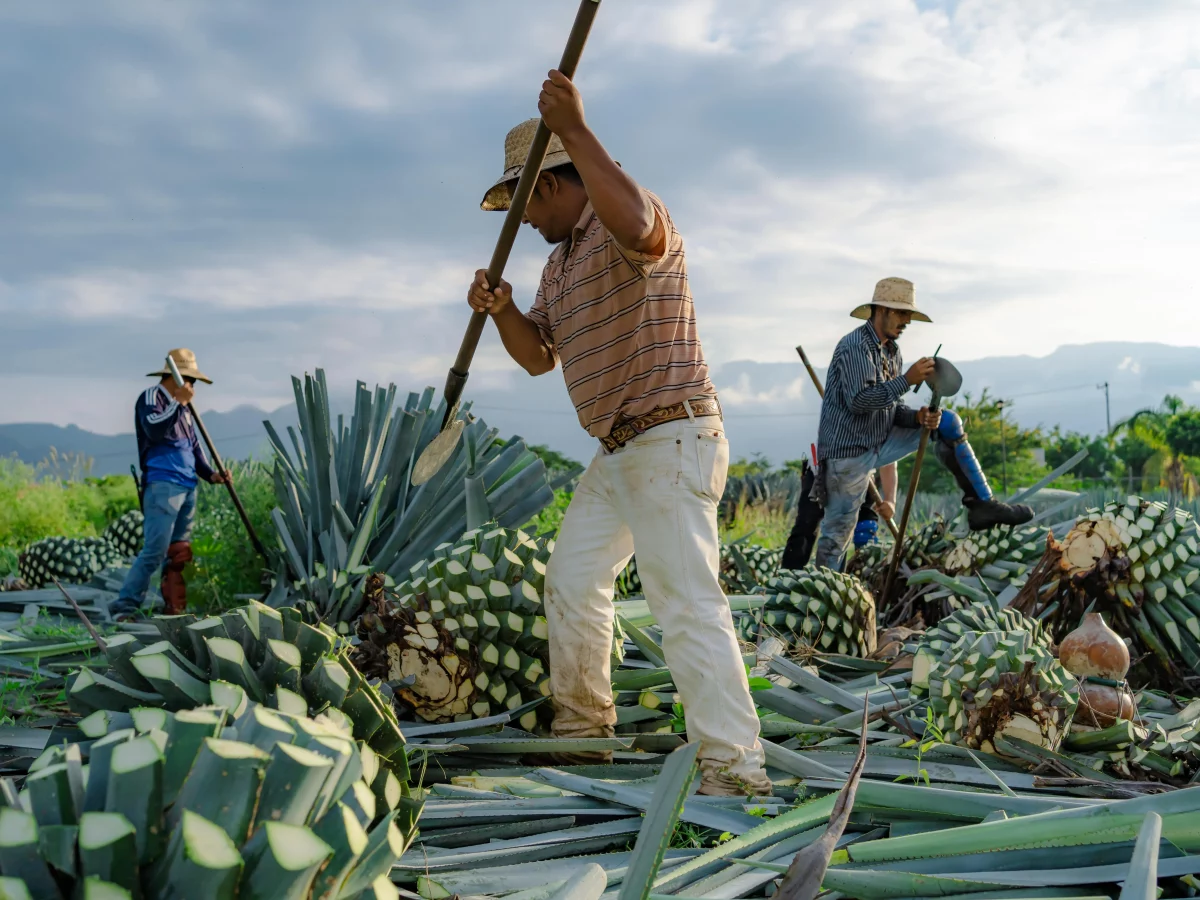Tequila is a beloved spirit with a rich history and a wide range of flavors and styles. Among the various types of tequila, three main categories stand out: blanco, reposado, and añejo. Each category has its distinct characteristics, aging process, and flavor profile. In this article, we will delve into the differences between blanco, reposado, and añejo tequila, helping you navigate the world of tequila with confidence.
The origins of tequila can be traced back to pre-Columbian times when the indigenous people of Mexico discovered the fermentable juices of the agave plant. The Aztecs, in particular, were known to have used agave in their rituals and believed it to have divine properties. The process of distilling agave-based spirits evolved over centuries, eventually giving birth to what we now know as tequila.
Tequila is made from the blue agave plant, specifically the piña, the heart of the plant. The production process involves several steps:
- Harvesting: Mature blue agave plants are harvested by jimadores, skilled farmers who remove the spiky leaves to reveal the piña.
- Cooking: The piñas are then cooked in traditional brick ovens or modern autoclaves to convert the starches into fermentable sugars.
- Crushing and Fermentation: The cooked piñas are crushed to extract the sugary juice, which is then fermented with yeast to convert the sugars into alcohol.
- Distillation: The fermented liquid is distilled at least twice in pot stills to create tequila with its unique flavors and characteristics.
- Aging (optional): Some tequilas are aged in oak barrels to enhance their flavors and develop complexities. The aging process can range from a few months to several years, depending on the desired style.
Blanco Tequila:
Blanco, also known as silver or white tequila, is the purest form of the spirit. It is typically bottled immediately after distillation or aged for a short period of time, usually up to two months. Blanco tequila showcases the true essence of the agave plant and is known for its vibrant, crisp, and fresh flavors.
Characteristics:
- Clear and transparent appearance.
- Strong, robust agave flavor.
- Hints of citrus, pepper, and herbal notes.
- Typically lighter-bodied and more intense in flavor compared to aged tequilas.
- Commonly used in cocktails like Margaritas and Palomas.
Reposado Tequila:
Reposado, meaning “rested” in Spanish, is aged for a minimum of two months but no more than one year in oak barrels. This aging process mellows the tequila, adding complexity and depth to its flavor profile while retaining the agave’s character. The oak imparts additional notes and a smoothness that distinguishes reposado tequila.
Characteristics:
- Light golden to amber color.
- Balanced flavors with a blend of agave sweetness and subtle oak influence.
- Notes of vanilla, caramel, butterscotch, and spices.
- Slightly smoother and more refined than blanco tequila.
- A versatile option for sipping neat or using in mixed drinks where a mellow agave character is desired.
Añejo Tequila:
Añejo tequila is aged for a minimum of one year, but less than three years, in oak barrels. This extended aging process imparts a deep complexity and richness to the tequila, making it the most refined and sophisticated of the three categories. Añejo tequila is often compared to fine whiskies and brandies due to its depth of flavor.
Characteristics:
- Rich amber color with golden hues.
- Complex and layered flavors with pronounced oak, vanilla, and spice notes.
- Subtle agave sweetness that becomes more subdued with age.
- Silky smooth texture and a lingering finish.
- Intended for sipping and savoring, best enjoyed neat or on the rocks.
Blanco, reposado, and añejo tequila each offer a unique experience to tequila enthusiasts and cocktail lovers alike. Blanco tequila captures the essence of agave with its vibrant and intense flavors, while reposado tequila strikes a balance between the purity of blanco and the added complexity of oak aging. Añejo tequila, on the other hand, embodies elegance and sophistication with its refined flavors and extended maturation period.
Popular Tequila Brands
- Clase Azul: Clase Azul is renowned for its exquisite craftsmanship and attention to detail. Their tequilas are handcrafted in small batches using traditional methods. From their iconic hand-painted ceramic bottles to the carefully selected blue agave, Clase Azul offers a luxurious tequila experience. Their portfolio includes Clase Azul Plata, Reposado, and Añejo, known for their smoothness, complexity, and distinct flavor profiles.
- Casa Noble: Casa Noble is a brand committed to producing high-quality, organic tequilas. They take pride in their organic agave cultivation and traditional production techniques. Their tequilas are triple-distilled for purity and aged in French white oak barrels to develop rich flavors and aromas. Casa Noble offers expressions such as Casa Noble Crystal, Reposado, and Añejo, known for their refined taste and elegant character.
- Fortaleza: Fortaleza tequilas are produced using traditional methods passed down through generations. Handcrafted in small batches, their tequilas capture the essence of old-world tequila production. The agaves are cooked in stone ovens, crushed with a tahona wheel, and fermented in open-air wooden vats. The result is a lineup of exceptional tequilas, including Fortaleza Blanco, Reposado, and Añejo, known for their depth, authenticity, and artisanal quality.
- Ocho: Ocho takes a unique approach by focusing on vintage-specific tequilas, highlighting the influence of terroir and harvest year on the flavor profile. They partner with select agave growers and distilleries to produce limited editions that showcase the distinct characteristics of each year’s harvest. Ocho offers Blanco and Reposado expressions, allowing tequila enthusiasts to explore the nuances and nuances of different vintages.
These four brands—Clase Azul, Casa Noble, Fortaleza, and Ocho—represent the pinnacle of tequila craftsmanship and are highly regarded for their exceptional quality, dedication to traditional methods, and distinct flavor profiles. Whether enjoyed neat, on the rocks, or in cocktails, tequila enthusiasts can savor the unique experiences offered by these high-quality brands.
Understanding the differences between blanco, reposado, and añejo tequila allows you to choose the right tequila for your preferred drinking style and occasion. Whether you prefer the bright and lively flavors of blanco, the mellow smoothness of reposado, or the deep complexity of añejo, each category has something unique to offer. So, raise your glass and savor the diverse and wonderful world of tequila.









